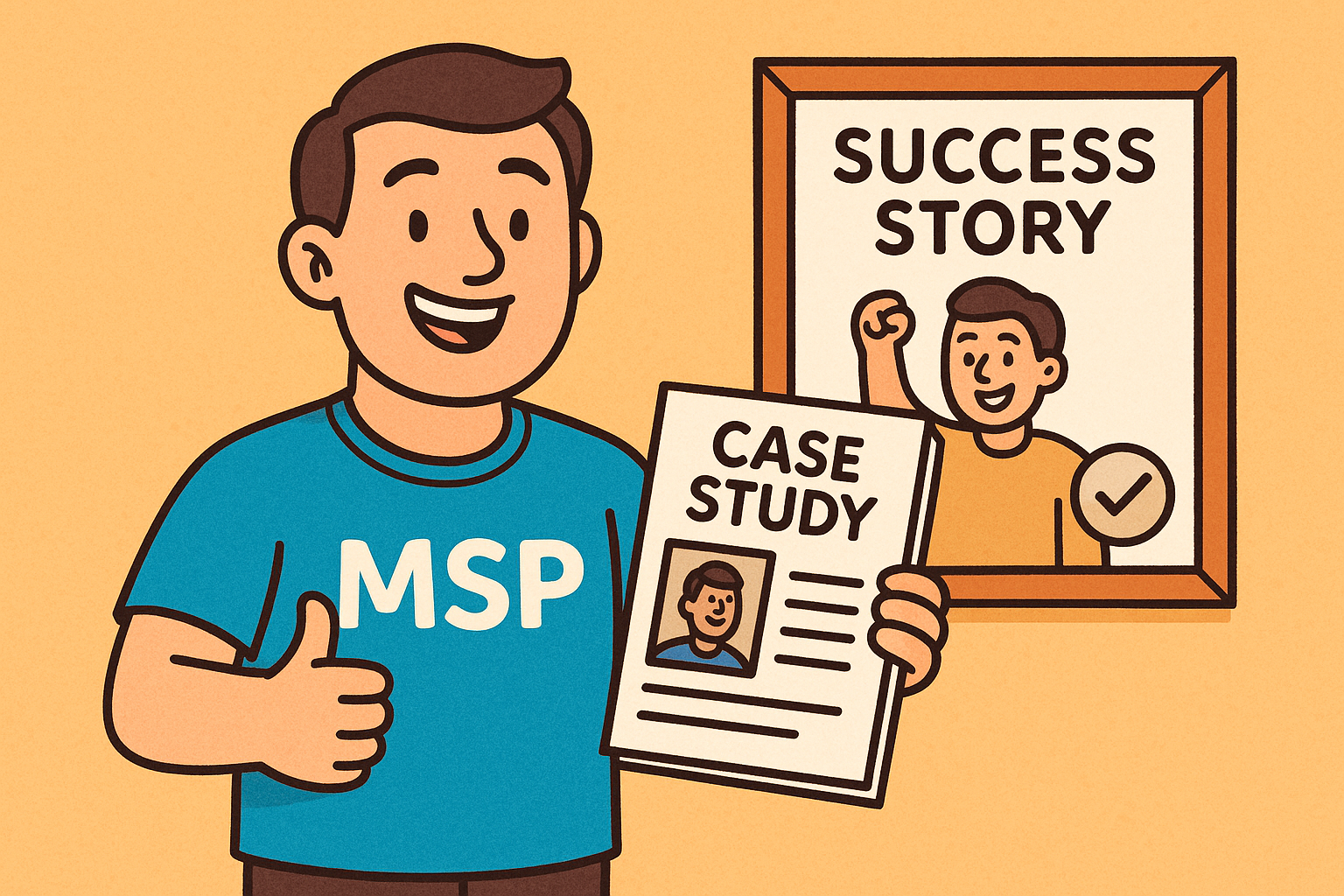You don’t need more leads—you need better ones.
If you’re an MSP stuck chasing lukewarm prospects, writing quotes that go nowhere, or wondering why deals keep stalling, there’s a good chance the problem isn’t your sales pitch. It’s your qualification process.
The best-performing MSPs don’t try to win every deal. They qualify ruthlessly—and that’s exactly why they close faster, grow revenue, and stay sane doing it.
Quick Recap
MSPs waste more time than they realize talking to leads that were never a fit to begin with. In this blog, we break down how to flip the script—from chasing every opportunity to confidently qualifying for urgency, authority, and fit. You'll learn how to:
-
Define a real, usable Ideal Customer Profile (ICP)
-
Build a qualification process that saves time and increases close rates
-
Use discovery questions to uncover real buying intent
-
Protect your team and your margins by walking away faster
If you’re tired of slow deals, flaky prospects, and painful clients, this is your shortcut to a cleaner pipeline and smarter growth.
“Your time is your scarcest resource. You have to treat it like your margins depend on it—because they do,” said Jonathan Vaudreuil, Director of Business Growth at RingLogix.
Why Most MSPs Don’t Qualify Hard Enough
Let’s call it what it is—most MSPs sell like consultants. That means we’re naturally inclined to help, educate, and try to prove our value up front.
But when you treat every lead like a great opportunity, you end up wasting your best hours on people who were never going to close.
“You’re trying to turn interest into intent. But real buyers already have intent—you just have to find it,” Jonathan explained.
Instead of pushing demos on every warm lead, start asking better questions that qualify for urgency, authority, and fit. Because unless they’re a fit for your process and your pricing, they’re not a prospect. They’re a distraction.
First, Let’s Define Your ICP (Because It’s Everything)
Before you can qualify ruthlessly, you need to know what “qualified” actually means for your business.
ICP stands for Ideal Customer Profile. It’s a clear, detailed picture of the type of customer who:
- Gets the most value from your services
- Is easy to onboard and support
- Pays on time and sticks around
- Has the potential to grow with you
Your ICP isn’t just “small businesses with 10-50 users.” It should include things like industry verticals, tech stack, buying behavior, and even cultural fit.
“The MSPs that scale aren’t just taking calls—they’re calling shots,” said Jonathan Vaudreuil, Director of Business Growth at RingLogix. “And that starts by getting crystal clear on who you want to work with.”
The 3-Part Shortcut to Better Deals
Here’s how top-performing MSPs qualify faster and close better deals—with fewer headaches down the road.
1. Stop Talking to Everyone
If your sales team (or you, the owner) is still spending time with any lead that fills out a form, you’re already losing. Every minute you spend on a bad-fit prospect is a minute you’re not spending with someone who’s ready to buy.
“Being selective doesn’t mean you’re leaving money on the table—it means you’re choosing the money that’s easier to keep,” said Albert Diaz, CEO of RingLogix.
Use your ICP as a filter, not just a profile. If a lead doesn’t meet it, don’t be afraid to say, “We’re not the best fit.”
2. Build the Right Sales Stages (And Actually Use Them)
A real sales process isn’t just a line in your CRM. It’s a decision tree for who moves forward—and who doesn’t.
If your deals go from “Demo Booked” straight to “Proposal Sent,” you’re skipping the most important part: discovery.
The fix? Add a Qualification stage that forces you to answer:
-
Is this prospect in our ICP?
-
Do they have budget authority and urgency?
-
Are we solving a clear problem for them?
If the answer is no, let them go.
“You don’t need to sell harder—you need to sell smarter,” said Jonathan. “And that starts with disqualifying early.”
3. Use Discovery to Find Fit (Not Just Pitch)
Too many MSPs treat the discovery call like a mini-demo. That’s backwards. Discovery is where you uncover what matters most to your prospect—and whether you should even be pitching at all.
Some of the best discovery questions from the webinar included:
-
“How are you handling billing or call reporting today?”
-
“What’s prompting you to explore new options right now?”
-
“Do you have any integrations in place—like Microsoft Teams or a CRM?”
These questions don’t just uncover pain points—they help you spot red flags before they become deal breakers.
Bonus: Your Sales Process Is a Retention Strategy
Ruthless qualification doesn’t just lead to faster closes—it leads to longer, healthier customer relationships.
When you only bring on right-fit clients, your support tickets drop, your onboarding is smoother, and your retention skyrockets. That’s what creates predictable MRR.
“You’re not just qualifying a deal—you’re qualifying a relationship,” said Jaime Norris, Partner Solutions Manager at RingLogix. “If the deal doesn’t feel right on Day 1, it won’t feel any better in Month 6.”
Qualifying Is the Most Underrated Growth Lever You Have
If you’re still measuring success by how many deals hit your pipeline, it’s time to shift your mindset.
The MSPs that scale aren’t chasing more—they’re choosing better. They’ve built sales systems that protect their time, their teams, and their profit margins. And it all starts with knowing who shouldn’t move forward.
So here’s your challenge:
-
Define your ICP in writing. Not in your head. Not “kind of.” Get specific.
-
Audit your current deals. Who’s outside your ICP but still in the funnel? Cut them loose.
-
Level up your discovery. Stop leading with demos. Start leading with questions that test for urgency, fit, and long-term potential.
-
Train your team (or yourself) to walk away faster—and more confidently.
This isn’t about arrogance. It’s about alignment.
“If a lead doesn’t match your business goals, it’s not a win—it’s a distraction,” said Jonathan.
When your pipeline is full of the right people, sales feels less like chasing… and more like choosing.
And that’s where smart growth begins.
👉 Watch the Webinar Replay
📥 Download the Sales Deck
📅 Not yet a partner? Book a Demo




